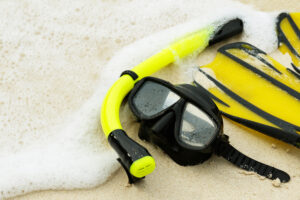What is a Jellyfish?
Jellyfish are fascinating marine animals belonging to the phylum Cnidaria. These gelatinous creatures have existed for over 500 million years, making them some of the oldest living species on Earth. Characterized by their distinctive bell-shaped bodies and tentacles, jellyfish are predominantly found in oceans but can also inhabit some freshwater environments. Their simplicity is deceiving, as they play crucial roles in marine ecosystems and exhibit complex behaviors despite lacking brains, hearts, or bones. This entry explores the biology, classification, ecological significance, and interactions between jellyfish and humans, shedding light on these enigmatic creatures.
Taxonomy and Classification
Jellyfish belong to the phylum Cnidaria, which also includes corals, sea anemones, and hydras. Within this phylum, jellyfish are classified into several classes, the most notable being Scyphozoa, Cubozoa, Hydrozoa, and Staurozoa. The class Scyphozoa, commonly known as true jellyfish, encompasses most of the large, conspicuous jellyfish species familiar to divers and beachgoers. These jellyfish typically exhibit a life cycle that includes both a polyp and a medusa stage.
Cubozoa, or box jellyfish, are known for their cube-shaped medusae and potent venom. Some species within this class, such as Chironex fleckeri, can deliver stings that are extremely painful and potentially fatal to humans. Hydrozoa includes a diverse range of species, some of which do not resemble traditional jellyfish at all. Notable members include the Portuguese man o’ war, which is often mistaken for a jellyfish but is actually a colonial organism made up of specialized individuals. Staurozoa, or stalked jellyfish, are less well-known and differ significantly from their free-swimming relatives, often attaching themselves to substrates in the benthic zone.
Physical Description
Jellyfish display a wide array of physical forms, though they share common characteristics such as a gelatinous bell and trailing tentacles. The bell, or umbrella, can range from a few millimeters to over 2 meters (6.56 feet) in diameter, depending on the species. The largest known jellyfish, the lion’s mane jellyfish (Cyanea capillata), can have tentacles that extend over 36.5 meters (120 feet) in length, making it one of the longest animals in the world.
The bell is typically transparent or translucent, with some species exhibiting vibrant colors such as pink, blue, or purple. The underside of the bell houses the mouth, which also functions as an anus. Surrounding the mouth are the oral arms, which help transport food. The tentacles, equipped with specialized cells called cnidocytes, contain nematocysts—tiny, harpoon-like structures that deliver venom to capture prey and deter predators.
Despite their simple body structure, jellyfish possess a rudimentary nerve net that allows them to respond to environmental stimuli. Some species also have light-sensing organs called ocelli, enabling them to detect changes in light and navigate through the water.
Habitat and Distribution
Jellyfish are remarkably adaptable and can be found in various marine environments, from the surface waters of the open ocean to the depths of the abyssal zone. They inhabit coastal regions, estuaries, and even some freshwater lakes and rivers. Their distribution is influenced by factors such as water temperature, salinity, and the availability of prey.
In tropical and subtropical waters, jellyfish populations tend to be more abundant and diverse. However, they are also found in colder regions, with species like the Arctic lion’s mane jellyfish thriving in frigid waters. Jellyfish can survive in oxygen-poor environments that are inhospitable to many other marine organisms, giving them a competitive advantage in certain ecosystems.
Seasonal blooms, often referred to as “jellyfish blooms,” can occur when environmental conditions favor rapid population growth. These blooms can have significant ecological impacts, altering food webs and affecting local marine life. While some blooms are natural occurrences, others are linked to human activities such as overfishing, which reduces the number of jellyfish predators, and climate change, which alters ocean conditions.
Diet and Predation
Jellyfish are primarily carnivorous, feeding on a variety of small marine organisms such as zooplankton, fish larvae, and other jellyfish. They capture their prey using their tentacles, which are armed with nematocysts. Once a prey item is ensnared, the tentacles retract, bringing the prey to the mouth where it is ingested and digested in the gastrovascular cavity.
Some jellyfish species exhibit opportunistic feeding behaviors, consuming whatever prey is available. Others have more specialized diets; for example, the moon jellyfish (Aurelia aurita) primarily feeds on plankton. Jellyfish play a crucial role in the marine food web, both as predators and prey. They help control populations of plankton and small fish, maintaining ecological balance.
Despite their venomous defenses, jellyfish are preyed upon by a variety of marine animals. Sea turtles, particularly leatherback turtles, are known to consume large quantities of jellyfish. Certain fish species, seabirds, and even other jellyfish also prey on them. In some ecosystems, jellyfish are an important food source, supporting the diets of these predators.
Reproduction and Lifecycle
The lifecycle of a jellyfish is complex and varies among species, but it generally includes both asexual and sexual phases. Most jellyfish start their lives as tiny larvae, known as planulae, which emerge from fertilized eggs. These planulae eventually settle on a substrate and develop into polyps, which are sessile and can reproduce asexually by budding.
Polyps can give rise to medusae through a process called strobilation, where the polyp segments and each segment develops into a juvenile medusa, known as an ephyra. The ephyra matures into an adult medusa, completing the lifecycle. Some species can also reproduce sexually, with males releasing sperm into the water to fertilize eggs released by females.
This lifecycle allows jellyfish to exploit different ecological niches and survive in varying conditions. The ability to reproduce both sexually and asexually gives them a high degree of resilience, contributing to their success as a species.
Ecological Role and Importance
Jellyfish play significant roles in marine ecosystems. As predators, they help regulate the populations of their prey, such as zooplankton and small fish, preventing overpopulation and maintaining ecological balance. Their feeding activities can influence the distribution and abundance of other marine organisms, contributing to the structuring of marine communities.
Jellyfish also serve as prey for a variety of marine species, supporting the diets of animals like sea turtles, fish, and seabirds. Their presence in the food web highlights their importance in nutrient cycling and energy transfer within marine ecosystems.
Furthermore, jellyfish contribute to the oceanic carbon cycle. When jellyfish die and sink to the ocean floor, they transport carbon from the surface waters to the deep sea. This process, known as the biological pump, plays a role in sequestering carbon and regulating global climate.
Human Interactions
Jellyfish have a profound impact on human activities, particularly in coastal regions. While they are a source of fascination and attract tourists, jellyfish can also pose challenges for industries such as fishing and tourism. Large blooms can clog fishing nets, damage fishing gear, and reduce fish catches, leading to economic losses.
In the tourism industry, jellyfish stings are a concern for swimmers and beachgoers. Some species, like the box jellyfish, have venom that can cause severe pain, injury, or even death. Beaches with frequent jellyfish populations may see a decline in visitors, impacting local economies. To mitigate these issues, some regions implement monitoring and warning systems to inform the public about jellyfish presence.
On a positive note, jellyfish are used in various scientific research and biotechnology applications. The green fluorescent protein (GFP), derived from the jellyfish Aequorea victoria, has become a valuable tool in molecular and cellular biology. Additionally, jellyfish collagen is used in cosmetic and medical products due to its biocompatibility and low immunogenicity.
Conservation Status and Threats
The conservation status of jellyfish varies among species. While many jellyfish populations are stable, some face threats from human activities and environmental changes. Pollution, habitat destruction, and climate change are significant factors that can affect jellyfish populations. For example, ocean acidification and rising temperatures can alter jellyfish distribution and abundance.
Overfishing also impacts jellyfish populations indirectly. The removal of jellyfish predators, such as certain fish species, can lead to an increase in jellyfish numbers. This imbalance can result in more frequent and larger jellyfish blooms, which can have cascading effects on marine ecosystems.
Conservation efforts for jellyfish often focus on broader marine conservation strategies, such as protecting habitats, reducing pollution, and managing fisheries sustainably. Understanding jellyfish ecology and monitoring their populations are essential steps in mitigating the impacts of environmental changes and human activities.
Key Takeaways
Jellyfish are remarkable marine animals with a long evolutionary history and significant ecological roles. Their unique biology and diverse behaviors highlight their importance in marine ecosystems. While they can pose challenges for human activities, jellyfish also offer opportunities for scientific research and biotechnological advancements. Understanding and conserving jellyfish populations is crucial for maintaining the health and balance of marine environments.

















